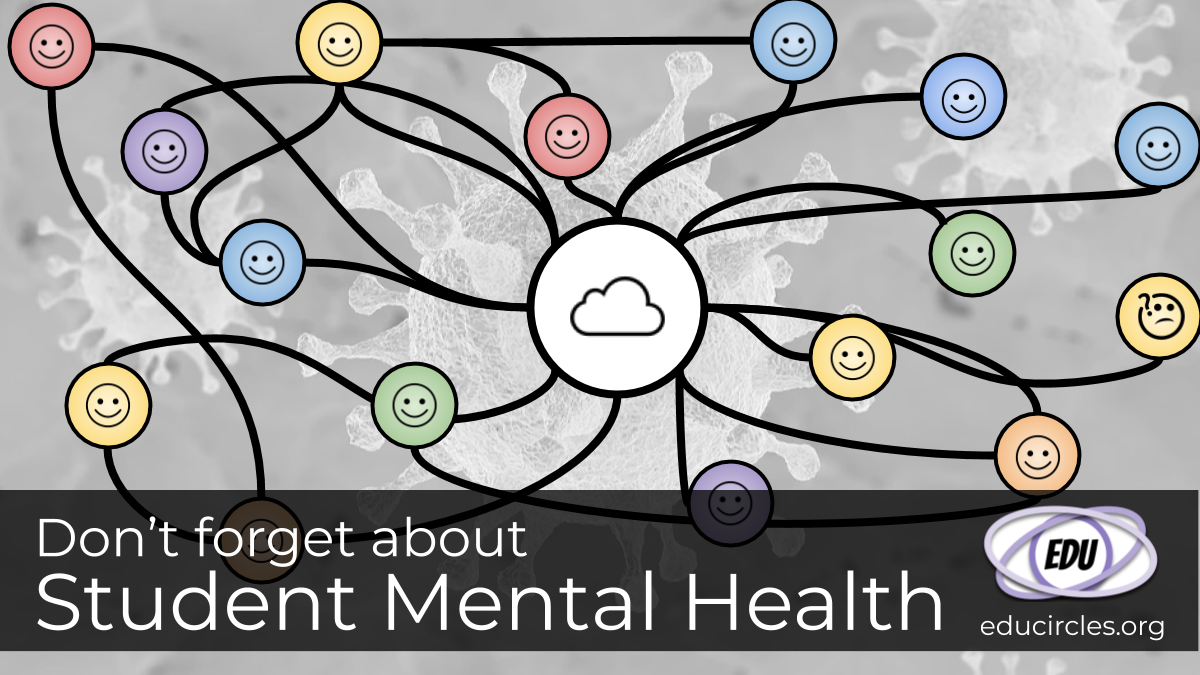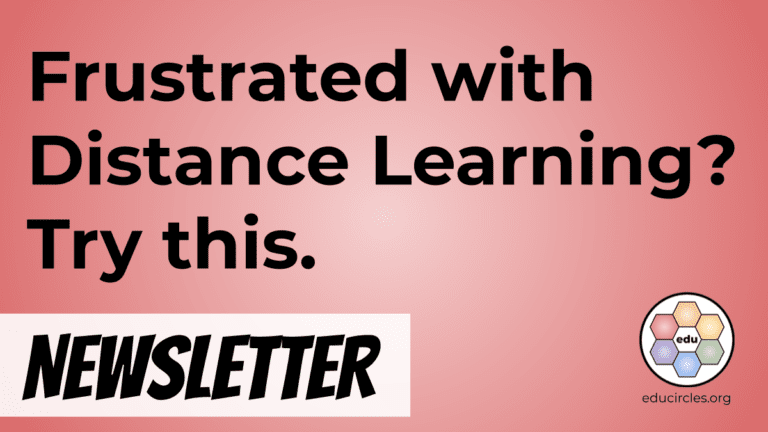Teachers, don’t forget about the mental health of your students (during Covid-19)
It’s important to acknowledge Covid-19 and the reality we are in.
There is no doubt that this is a global challenge with significant and scary consequences. Social distancing and physical distancing are critical.
However, it’s equally important to think about the mental health and neurodiversity of our students and colleagues during these difficult times.
As educators, we can never be entirely sure of the health of our students in our classrooms.
- They may have physical ailments that they haven’t disclosed to us.
- They may have a pre-existing health condition that even they are not aware of.
Physical health isn’t just the avoidance of serious physical injury. It’s also about using strategies to stay physically fit and healthy.
Likewise, we don’t always know how our students are doing emotionally.
Things may seem like everything is okay on the outside, but especially as we get older, we start to wear a protective mask and shield ourselves from the outside world.
- Students may have some mental health challenges that they haven’t disclosed to us.
- Students (and teachers!) can also have a pre-existing health condition that even they aren’t aware of.
Perhaps a stressful event like a pandemic may trigger some stress and anxiety beyond our students’ (and colleagues’) abilities to cope with alone.
Plus, there can be a lot of significant stigma around mental health.
- In the staffroom, it is often easier for teachers to talk about a physical injury than to talk about their anxiety, depression or paranoia.
- Parents may not always disclose learning challenges or mental health challenges to the school for fear of how their kids will be perceived.
- Students may not want to self-advocate or even realize they need to self-advocate for their mental health needs.
Mental health isn’t just the avoidance of serious mental illness. It’s also about using strategies to stay mentally fit and healthy.
As teachers, we have an opportunity to provide a calming, stable, familiar environment for our students. We can try to create a safe space for learning.
Social media and news bias can make things seem overly scary. As teachers, it’s important not to sensationalize the pandemic or to hyper-focus on Covid-19 news in the classroom as this can skew our perspective.
In 2017, the leading cause of death in the United States was heart disease, but that’s not what the typical person is afraid of.
During these difficult times, even though we are physically distancing ourselves to slow down the spread of a virus, it’s important that we still feel connected – students and teachers, alike.
Teaching tips for a world of Covid-19
Where possible, what routines can we continue from our physical classroom in our virtual classrooms?
- Online journaling?
- Bell work?
- Reading logs and reading responses?
- Science projects?
What transferrable skills can we teach our students through our curriculum?
How can we encourage a growth mindset, effective communication, and critical thinking skills without explicitly using news articles about Covid-19 as course material?
NOTE: It’s important to acknowledge that some students will make connections between your content and the current pandemic, but don’t make that the focus of the conversation.
BUILD CHARACTER
- You could talk about perseverance strategies by doing sudoku puzzles (which get increasingly harder, but if you apply certain strategies, you can still be successful.
- Some students will get bored or frustrated, so what life strategies can you apply to keep going through a task you don’t want to do?
EXPLORE EFFECTIVE COMMUNICATION STRATEGIES
- You could talk about effective communication strategies by looking at movie or TV show clips (posted on YouTube)
- Analyze what went right, where things went wrong, and what might the characters have done differently to avoid miscommunication.
- What strategies can we use to communicate clearly – especially when we can’t see the other person?
TEACH CRITICAL THINKING STRATEGIES
- You could talk about critical thinking strategies by looking at how search engines, social media, and streaming services offer us personalized content… and trap us in an invisible filter bubble.
- We think we getting unbiased results when we use the internet, but what we actually get is highly curated content based on algorithms trying to show us what we want to see.
- Eli Pariser has a fantastic TED talk on this: Beware online filter bubbles. He spoke about this in 2011 and it’s even more relevant today!
- Do an experiment with your class and have everyone search up the same topic (not Covid-19 related) to see if your search results are similar or different. Then ask friends and family members from different parts of the world to send you screenshots of what they get.
Bottom line:
As teachers, we do more than just teach a curriculum. It takes a village to raise a child, and we’re part of that village.
We teach transferrable learning skills to our students to help them deal with Covid-19 (and future calamities.)
We provide a stable, familiar, connected learning environment for our students – whether it’s in our physical classroom… or virtual classroom.
We continue, as always, to work hard to stay connected with our students – especially in a world where physical distancing feels like social isolation.
During the coronavirus pandemic, it’s important to stay calm and teach a growth mindset.

Author’s Note:
My experience is with intermediate students. I’ve taught English Language Arts in a grade 7/8 classroom for 14 years. I experienced a mental health crisis from watching a school play shown to me and my grade 8 students at my school. This sparked the end of my classroom teaching career. I now help make the world a better place by helping people achieve their goals and stand up for themselves and each other. Oh, and I also make digital learning products for teachers.

